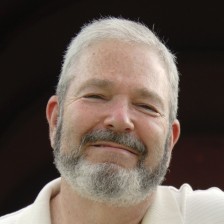Cross posted from Howard Brickman's article on Hardwood Floors Magazine: Inspector Blog.

I hope that my loyal fans will forgive the temporary lapse in blogging. Hurricane Irene blew through town, taking with her our electricity for almost a week. On the plus side, I got to break out my “Survivorman” skills and lived to tell the tale. Wood has many other uses besides wood flooring. With my handy new Rocket Stove I was able to cut up the fallen branches and heat water for coffee and tea and also cook some one-pot meals.
By the time my power was restored, I was off to Charleston, S.C., to attend a wood floor class organized by Selva Lee Tucker featuring faculty from North Carolina State University. I must say: The class was yet another home run by Lee. With 10 years of instigating wood floor technical training under his belt, Lee has a knack for seamlessly combining hard-core practical and scientific knowledge.
The four-day class was instructed by two North Carolina State wood science professors and a wood floor guy from the Boston area. (Guess who the latter was?) The fee was $495, and those in the know can appreciate what an incredible value that is. It was a sell-out crowd, with over 50 attendees flying in from all over the U.S.
This was the sixth collaboration between Lee and NC State Wood Science faculty, several of which I have attended. Two of NC State’s finest taught fundamentals regarding the effects of moisture on the building envelope. An all-encompassing body of information was presented regarding the effect of temperature on relative humidity, how moisture moves through building components, and how fungi develop when exposed to moisture.
Dr. Phil Mitchell, wood products extension specialist and associate professor, has extensive experience working at major universities (Mississippi State, North Carolina State), and international wood products manufacturers (Weyerhaeuser). Dr. Phil is an acknowledged authority on the wood-moisture relationship with regard to academic as well as practical applications.
Dr. David C. Tilotta, associate professor and housing extension specialist, has a great deal of experience with contamination of buildings from chemicals and water, with extensive research and teaching background at the University of North Dakota and North Carolina State University. Dr. Dave introduced a software program from Oak Ridge National Laboratories that models temperature and moisture movement in exterior wall, floor, and roof systems.
On a personal note, do you remember how intimidated you were by your professors in college? This couldn’t have been further from the case with these two fun-guys who taught about fungi (pun intended). Tilotta and Mitchell are two of the best-natured and engaging college professors, and they took some fairly complex material and made the concepts much easier to digest (another fungi pun). The presentations were excellent, and the ease with which they answered questions worked to support true understanding. I left wishing that they had been my professors when I was an undergraduate (back when dinosaurs roamed the earth).
It has been exciting to see a major university put some effort into supporting the wood floor industry. Those of you out there who need studies, research, or laboratory testing should have the folks at the NC State Wood Products Extension Department on speed-dial. Dr. Phil’s email is phil_mitchell@ncsu.edu.
Last year, I had the opportunity to attend a three-day Wood I.D. class at the NC State Wood Anatomy Lab led by two of the leading wood anatomists in North America. The class was my personal favorite, and I’m hoping that it will become an annual event or at least every other year. I could see myself making a pilgrimage to attend. Even after 33 years in the wood flooring industry, I’m always pleasantly surprised to take away new insights about my specialty.
Stay tuned for my next blog: a step-by-step checklist to minimize installer liability when there are problems on the job.
